Many think solar systems are too complicated
If you ask a lot of people about solar systems I'm certain that many of them will say that they are too complicated and difficult to understand. They are expensive and probably won't live up to their expectations.
And they would be absolutely correct
Except when they aren't.
Many home solar systems are indeed very complicated and expensive. There are many solar panels wired together. They have to go through a charge controller. Then there are batteries linked into the mix. Often times there are controllers that link into the existing power grid. Then there is the issue of how much power you will actually get. It all requires certified electricians and people who are indeed knowledgeable with solar systems! To do all that means : Expensive!
But a simple system can be as easy as plugging in your cellphone!
However, it is possible to have a very simple system that is as easy as plugging in your cellphone. Even the least sophisticated people can usually manage to plug in their cellphone to charge it.
This is a super simple system :
- Solar panel
- Battery pack.
- USB-C cord
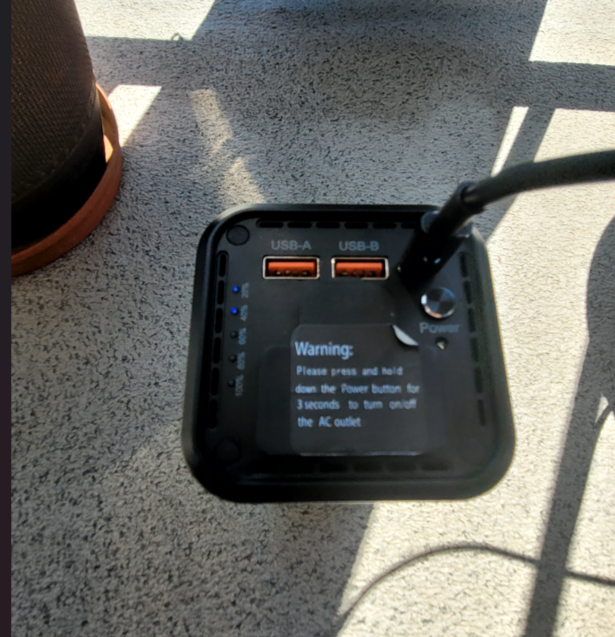
That's a USB cord plugged into the battery pack. Nothing complex there. On the other end?
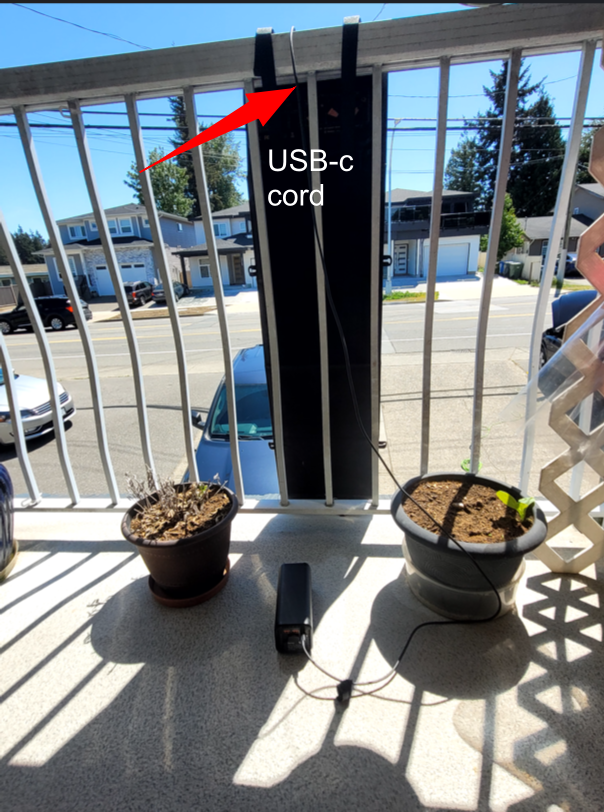
The solar panel has a USB-c connector on it. So I just hang it facing the sun and plug in the power bank.
Here it is if you are looking at it from the outside.
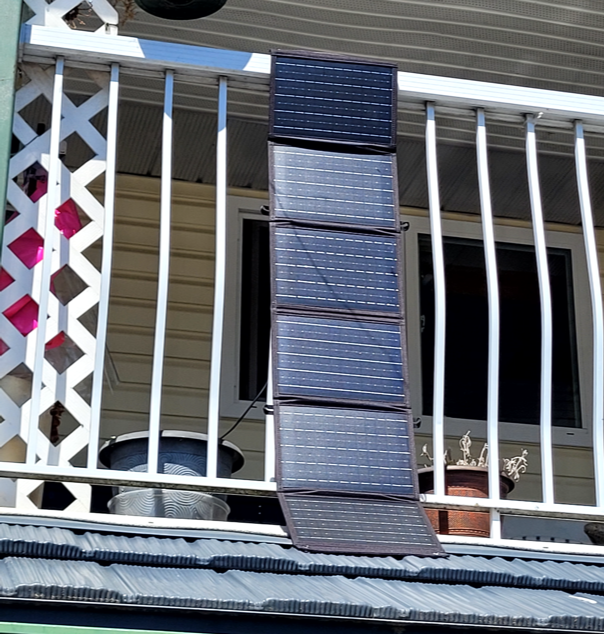
A couple things to note. The top panel is shaded so I'm not getting 100% output from the panel. Does it still work? Absolutely. Also it is 5 panels linked together. The reason for that is it folds up to pack along with you. I could take it to the park, to the beach, on a plane, pretty much anywhere.
Imagine being able to charge your cellphone wherever you go. How nice would that be.
However in this instance I'm charging a power bank.
What can I power with the bank?
Now it is a 100W and 100Wh battery bank. For simple things like charging a cellphone, running a USB light, USB fan, USB shaver and pretty much anything else USB it works wonderfully. In addition it will also run 100W home appliances. The big test for me is this :
** Would I be able to cook something to eat with it?**
So many people in developing nations use a 3 stone fire to cook their food. It leads to deforestation due to cutting down firewood. It also causes respiratory issues from breathing in all that smoke. Imagine if someone had a simple and reliable way to cook their food! That's always been my goal but full power banks are expensive and small ones can't cook food.
** Or can they?**
My previous attempts at cooking with such a low power device have all failed. However, today as a "proof of concept" idea I learned about "sous vide" cooking. In laymans terms "sous vide" is cooking with hot but not boiling water for a longer time.
As an example: To cook eggs they must reach an internal temperature of 74C to be safe. However, to cook by pasteurization you only need about 65C for 20 minutes. Lower temperature and longer time changes the overall cooking techniques and taste but also mean less energy required.
Typically sous vide is done in a water bath with circulating water and a thermometer to precisely monitor the temperature. In this case I'm just using a tiny crock pot and I'll check the temperature every now and then to make sure its hot enough to make the food safe to eat.
Scrambled Egg with onion salt and pepper
For this test I"m just going to cook a simple egg. Scrambled with a bit of onion, salt and pepper for spice. Add it to a zip lock bag and let sit in hot water (crock pot) until the battery pack dies. I charged it in advance and if I get cooked food then I know I can use solar for food. Horray!
Here are a few images :
Egg and spices
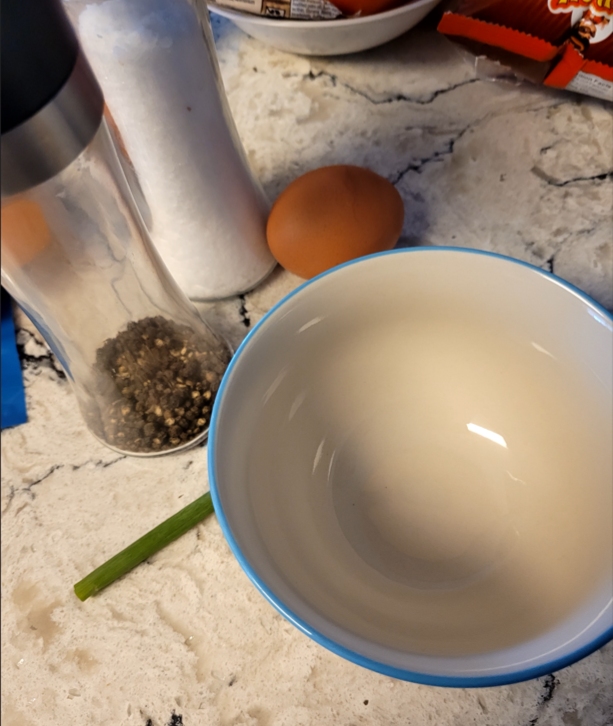
Mixed then scrambled

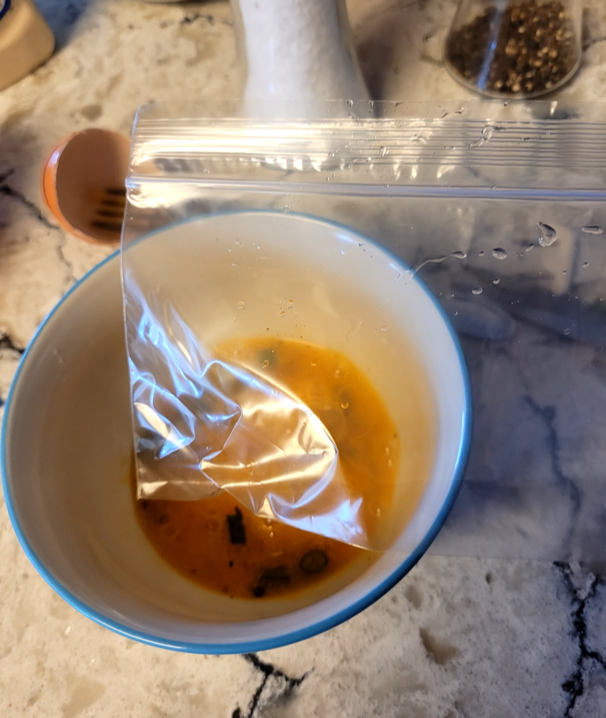
Added to crock pot
The egg is put into a zip lock bag and placed in a crock pot with 1 cup of water inside.
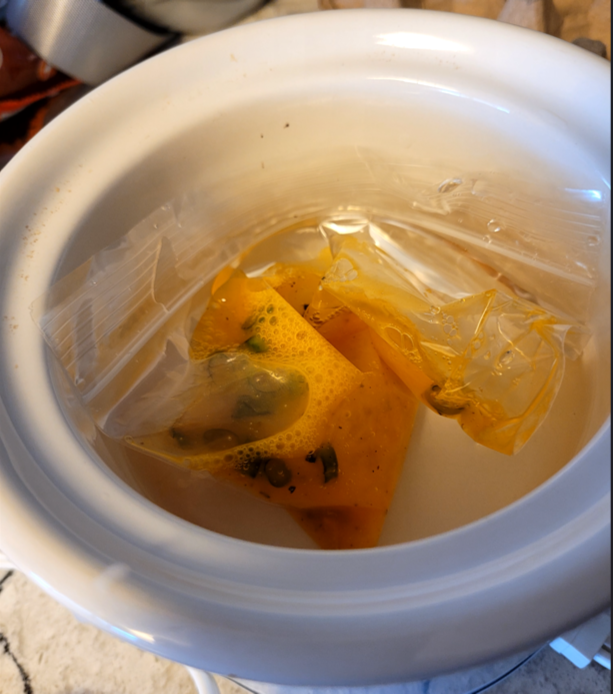
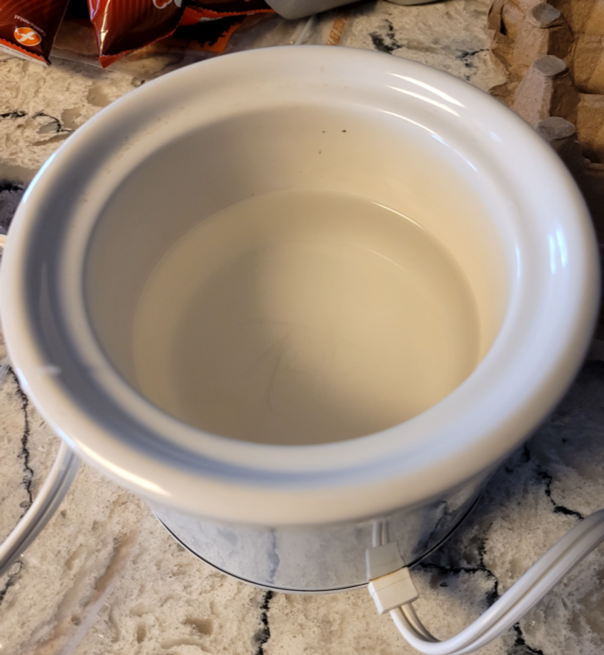
Plug into the power bank
Then it is time to plug into the power bank and let it do its work.

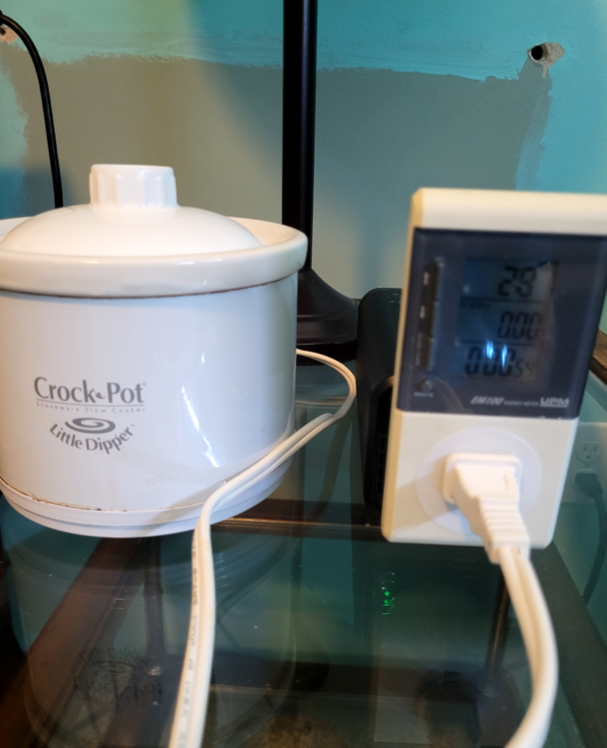
I added the power meter to see how much power was given to the crock pot. 28W power draw to start.
After ONE hour
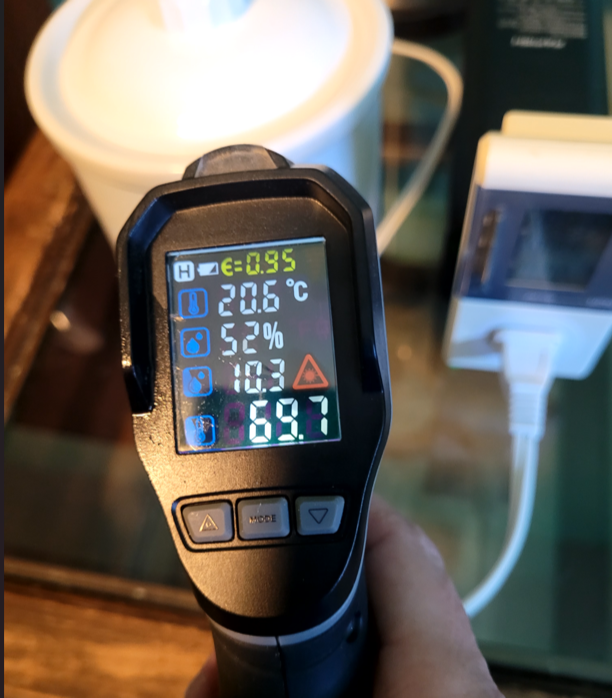
After an hour I took at look inside and measured the temperature at almost 70C. Easily enough to make sure the food is safe to eat.
After TWO hours
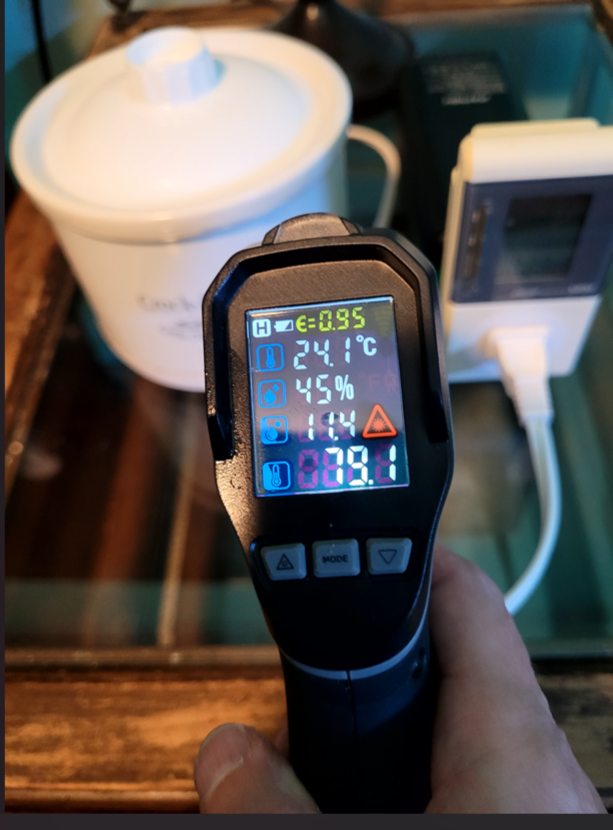
79C which is easily enough to cook the egg even if just for a very short period of time. Since its been in there for two hours I have no doubt that the food will be cooked when I take it out.
After 2.5 hours
Now after this time the battery was finished. That means I didn't get exactly 100Wh out of the battery but I never really expected 100% power out...that isn't the way batteries work.
However, the food was certainly cooked.
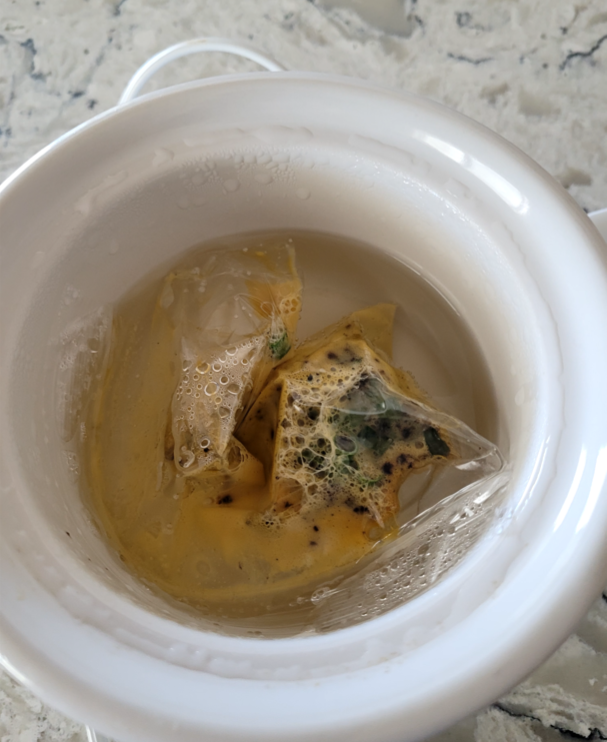
Indeed, if anything it was way overcooked. It only needed to be at 74C for about 6 minutes or 65C for about half an hour. It spent almost 3 hours cooking.
Add a bit of ketchup and its certainly edible.
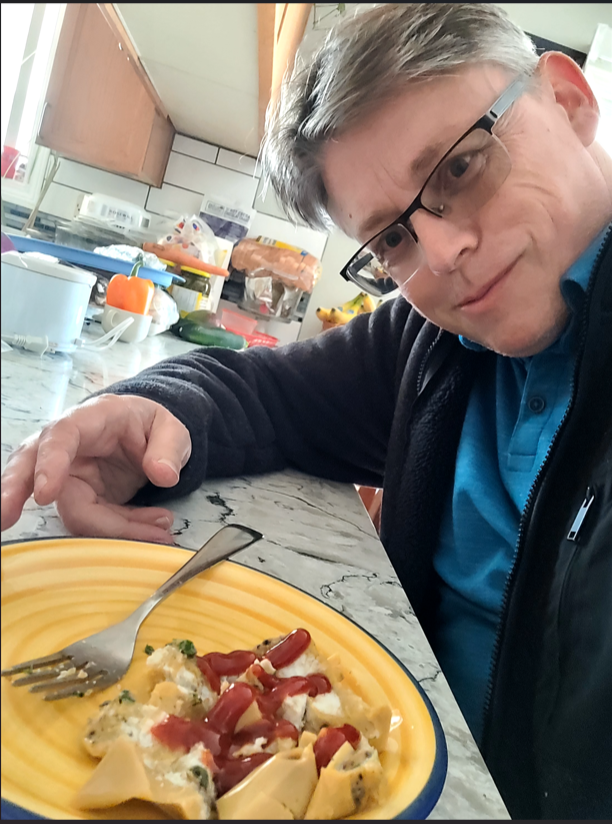
With a bit of ketchup the eggs were certainly edible. A bit rubbery because they were overcooked but the whole point was "could I cook some food using only solar power".
YES
Is the process simple enough that anyone could do it?
YES
Would it have been better if I stopped cooking 90 minutes earlier?
YES
Then I would have had power left over to charge my phone while I was eating the eggs!.
But why Sous Vide?
The question might crop up. Why wouldn't I just throw in the eggs directly to the water and make hard boiled eggs?
Answer: Because it didn't work.
The last time I tried this I did indeed try to make hard boiled eggs. 3 of them to be precise. In order to cover all the eggs to ensure cooking I had to add over double the amount of water to the crock pot. Twice as much water meant a lot more energy was needed to get it up to cooking temperature. As a result the eggs only made a maximum temperature of 69C so it was safe to eat but the eggs came out as a runny mess from their shells.
With the food in a plastic container I could cover them with much less water leading to a more cooked final product. A lot more cooked final product.
The final message
In the end the final message is this. Solar power can certainly be a major project. However it can also be very simple as well. It is quite possible to get something working which can do useful tasks from charging your phone to cooking some food....although a little experimentation may be required.
Also as a final note @monica-ene wrote about her experience with a solar home running fans, lights and more and wished she had something similar. However, I know she has an almost identical power bank. I wanted to show her this so she knows that even one small add on to her current power bank would mean less reliance on her unreliable electric company.
Just throw out a solar panel and plug in the phone or power bank.
Then use imagination to see what you can do from there.
Thanks for reading!
And as always, I love getting feedback.
I don't think solar systems are actually complicated, because I actually use it in my house and at my office.